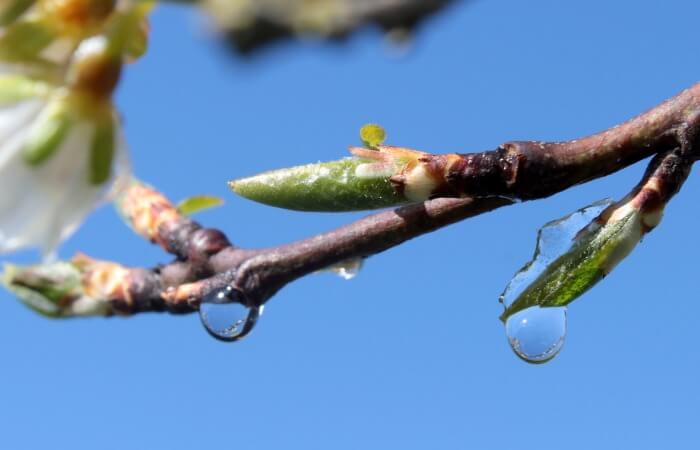Water hyacinth – biotechnology of wastewater and other waters eyhorniya for ponds planting and care price to buy seeds in the aquarium at home

Water hyacinth – eyhorniya – biotechnology of wastewater and other water and forage for agriculture.
Eyhorniya absorbs water not only organic and mineral substances, manure, feces, gasoline and other petroleum products, detergents, various poisons (rocket fuel, heptyl, etc.), phosphates, nitrates, phenols, dissolved in water fertilizer (insecticides, herbicides, etc.), heavy metals (copper, lead, zinc, cadmium, etc.), radionuclides, etc. of organic and mineral substances. It kills harmful bacteria infested bodies of water, making any water suitable for bathing and drinking. Water hyacinth enriches the water with oxygen produced as a result of biosynthesis.
Eyhorniya (water hyacinth) – description of plants
The benefits of using eyhornii
The efficiency of wastewater treatment by water hyacinth
Eyhorniya (water hyacinth) is a description of the plant:
Water hyacinth or eyhorniya great (Eichornia crássipes) – loving the South water plant family Pontederiaceae. Its native land – tropical regions of South America.
Leaves collected in the outlet. At the base of the sheet is swelling, inside of which is a porous fabric, whereby the plant is kept afloat. The roots are long (up to 0.5 m), completely immersed in the water. The flower resembles a hyacinth, can be pink, blue or purple. Flowers appear in late summer.
Eyhorniya grows quickly and reproduces rapidly, which was a real disaster for many rivers and lakes, where it was accidentally introduced. Strong root system of water hyacinth is sucking the water all the mineral and organic substances and the local flora could not resist the aggressive weed-the stranger. But these “bad” qualities: well-developed root system, a high rate of clonal propagation and rapid accumulation of biomass allow the use of water hyacinth as a “cleaner” for clean water, wastewater, and other waters.
Eyhorniya has a strong transpiration of up to 50 million litres per hectare and, therefore, high vegetative activity. One outlet 50 forms a day to 1 thousand offspring, each of which, in turn, again begins to divide. Without higher mathematics it is easy to calculate that 3 months, one plant turns into a million, and for half a trillion copies!
It is estimated the economic feasibility of this technology for the treatment of waste and other waters with water hyacinth. Traditional costs more than 10(!) times greater than the costs when using water hyacinth.
In a warm climate eyhorniya in reservoirs forms a continuous thickets, covering the surface of the water, large floating leaves, and in flowering time on the water appear large flowers, similar to hyacinth. In many tropical countries the plant is called a “green plague” – so quickly she grasps new space. In countries with temperate climates, the risk of uncontrolled growth eyhornii is constrained by the cold climate, winters heat-loving southern plant does not tolerate. Despite the cold of winter, the water hyacinth can be grown in ponds quite well.
Properties eyhornii:
Eyhorniya absorbs water not only organic and mineral substances, manure, feces, gasoline and other petroleum products, detergents, various poisons (rocket fuel, heptyl, etc.), phosphates, nitrates, phenols, dissolved in water fertilizer (insecticides, herbicides, etc.), heavy metals (copper, lead, zinc, cadmium, etc.), radionuclides, etc. of organic and mineral substances. It kills harmful bacteria infested bodies of water, making any water suitable for bathing and drinking. Water hyacinth enriches the water with oxygen produced as a result of biosynthesis, and all harmful substance breaks down into its component chemical elements, becoming an excellent feed for livestock and poultry. No toxic substances in it is not formed. In addition, the root zone water hyacinth creates a community of microorganisms, which actively oxidize organic substances of different nature and make them available to plants.
The benefits of using eyhornii:
– the use of the water hyacinth is a simple and effective way of cleaning water, industrial, domestic wastewater, ponds livestock and poultry farms, urban reservoirs, lakes, small rivers, ponds and recreation areas,
– the ability to completely eliminate the strong smell of toxic lagoons during summer, the overlapping of the plant, more than half of the area of the ponds
– the use of water hyacinth allows you to clear clogged mineralizovannyh sediment basins, channels,
– cleared ingredients drains can be used as working capital for economic purposes: watering,etc.
– during wastewater treatment by this method killed all pathogenic bacteria,
– use eyhornii – the fundamental solution of many problems of shortage of fodder,
– the ability to bargain on the territories of the significant harvest of high-protein vitamins (vitamins a, b, C, E) of forage mass up to 500 tons per hectare per season
– when feeding Eichhorn quarantine the animals , they quickly recover,
– the ability to use eyhorniyu grown both as feedand as a vitamin Supplement in combination with winter feed in an amount up to 15% to the main feed, which increases the digestibility, affects the weight gain of the animals and, consequently, savings of the main feed,
– food from eyhornii promotes greater absorption of fixed feed animals and birds
– the use of the green mass as more effective than compost, organic fertilizer – vermicompost,
– the use of green feed eyhornii in sheep and goat breeding can reduce the pressure on pastures (40-50%) when growing next to eyhornii.
Care Eichhorn:
In tropical countries eyhorniya growing all year round. In countries of temperate climate in the period from spring to autumn.
Eyhorniyu planted in late spring or early summer, when the water warms up. Grows best water hyacinth where there is enough sun and water gets warm in the afternoon. High summer temperatures did not harm him. If the summer weather is constantly cool, the plant continues to increase vegetative mass, but may not bloom.
The more water organic residues, the more food for aquatic plants and grows so luxuriant water hyacinth, forming on the surface a luxurious undergrowth.
Typically, the water hyacinth can be propagated vegetatively by separating young rosettes from the parent plant. The increase of the mass have eyhornii occurs when the reduction in the duration of daylight.
Water hyacinth reproduces by seeds. But for their maturation requires a temperature not lower than +35 °C.
In the autumn, when the temperature drops at night to 6-10 degrees, eyhorniyu entered in the room, you can put in a tank with lights.
A good way to winter storage water hyacinth: a well-developed instance is placed in a jar with water collected from the pond, make a Styrofoam float so that the roots were submerged in water and the leaves, lying on the float touched the water and do not rot. On the bottom to add sand or sludge from “mother pond”. At normal room temperature air and water – about +20°C eyhorniya successfully overwinter.
So the plant does not “starving” during the winter, add some fertiliser for aquatic species.
The efficiency of wastewater treatment with water hyacinth:
The results of wastewater treatment kudryashovskoe pig (Novosibirsk oblast):
| Option | The value of the parameter in the wastewater (mg/l) | Parameter value after treatment (mg/l) |
| ammonia nitrogen | 30-50 | 4-5 |
| COD | up to 300 | 25-30 |
| BOD5 | up to 150 | 20-30 |
| oxygen | to 0.5 | 2-5 |
The efficiency of removal of pollutants by one hectare of water hyacinth per day is at the ammonium nitrogen of 150-200 kg for BOD5 and 21.9-36.5 kg, COD – 38,7-238,0 kg, oil products – by 1.6-4.5 kg.
Accumulation of heavy metals by water hyacinth in 20 days for wastewater Belovsky ore mining and processing enterprise (Kemerovo region, 2000):
| Ion TM | Concentration in the water- Arch (mg/l) |
Concentration in plants SR-e (mg/kg dry weight) |
The rate of accumulation (mg/kg dry.weight per day) |
The accumulation factor (SRA-e/Arch) |
| Cu2+ (copper) | 1,0 | 1955 | 74,9 | 1955 |
| Zn2+ (zinc) | 2,0 | 1809 | 92,6 | 905 |
| Pb2+ (lead) | 1,0 | 414 | 20,0 | 414 |
| Cd+ (cadmium) | 0,5 | 370 | 19,5 | 740 |



